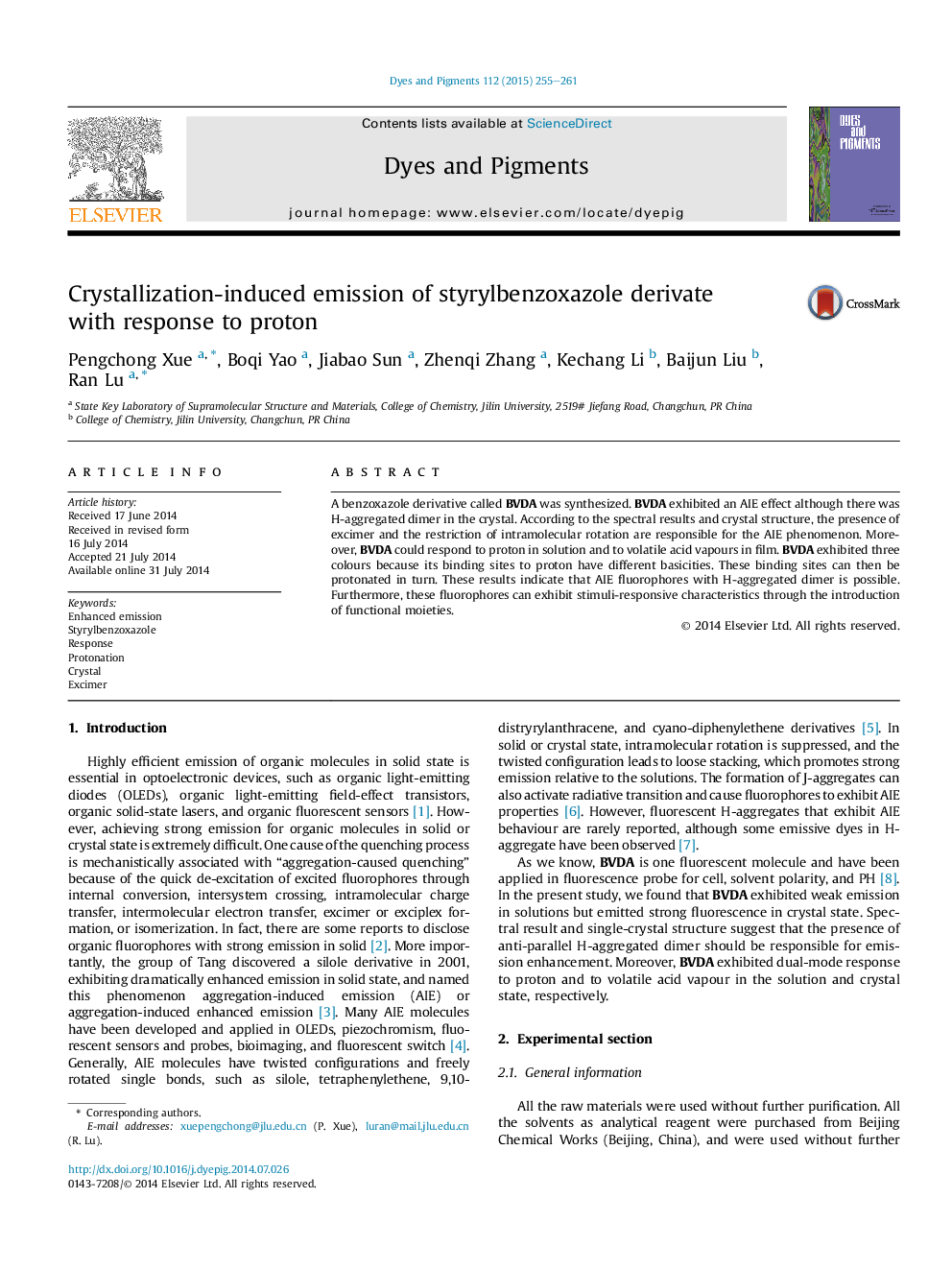| Article ID | Journal | Published Year | Pages | File Type |
|---|---|---|---|---|
| 175956 | Dyes and Pigments | 2015 | 7 Pages |
•A benzoxazole derivative exhibited an AIE effect although H-aggregated dimer in the crystal existed.•The presence of excimer and RIR are responsible for the AIE phenomenon.•Moreover, it can respond to proton in a solution and to volatile acid in film.•BVDA exhibits three colours because its binding sites to proton have different basicities.
A benzoxazole derivative called BVDA was synthesized. BVDA exhibited an AIE effect although there was H-aggregated dimer in the crystal. According to the spectral results and crystal structure, the presence of excimer and the restriction of intramolecular rotation are responsible for the AIE phenomenon. Moreover, BVDA could respond to proton in solution and to volatile acid vapours in film. BVDA exhibited three colours because its binding sites to proton have different basicities. These binding sites can then be protonated in turn. These results indicate that AIE fluorophores with H-aggregated dimer is possible. Furthermore, these fluorophores can exhibit stimuli-responsive characteristics through the introduction of functional moieties.
Graphical abstractA benzoxazole derivative exhibits an AIE effect in presence of H-aggregated dimmer. The presence of excimer and RIR are responsible for the AIE phenomenon. Moreover, it had a dual mode respond in s to proton and volatile acid in a solution and in film, respectively.Figure optionsDownload full-size imageDownload as PowerPoint slide
